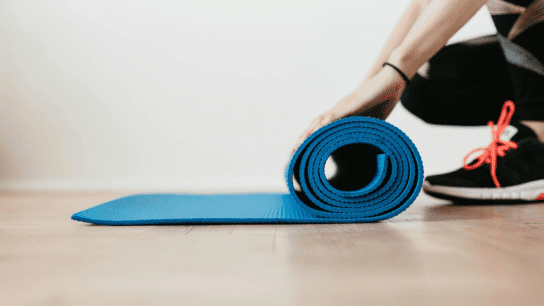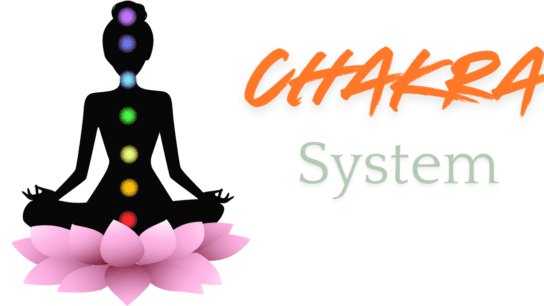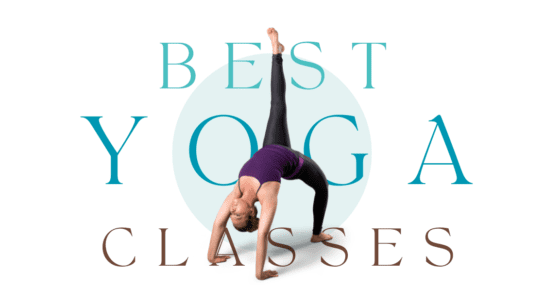Introduction

Understanding Cat Pose Yoga
Cat Pose Yoga, or Marjaryasana, is a common and essential pose in many yoga routines, particularly within the sequence known as “Cat-Cow” (Marjaryasana-Bitilasana). Cat Pose Yoga mimics the motion of a cat arching its back, making it an apt name for this yoga pose. By combining Cat Pose with Cow Pose, practitioners can create a flowing sequence that enhances spinal flexibility and strengthens the core.
The Benefits of Cat Pose Yoga

- Spinal Flexibility and Mobility
Cat Pose Yoga encourages the movement of the spine in a controlled manner. By practicing this pose regularly, you can improve spinal flexibility, reduce stiffness, and promote better posture. The pose helps in the articulation of the vertebrae, making the spine more supple. - Core Strength
Engaging the abdominal muscles in Cat Pose helps strengthen the core. A strong core is crucial for overall stability and balance in both yoga practice and daily activities. This strength-building aspect makes Cat Pose an excellent choice for anyone aiming to enhance their core stability. - Improved Posture
Regular practice of Cat Pose contributes to better alignment of the spine and shoulders. This can lead to improved posture and reduce the risk of developing postural issues, which are common in individuals who spend long hours sitting at desks. - Stress Relief and Relaxation
The rhythmic nature of Cat Pose, when combined with deep, mindful breathing, can help alleviate stress and tension. This pose encourages a calm and focused mind, which can be beneficial for reducing anxiety and promoting relaxation. - Digestive Health
The gentle compression and release of the abdominal area during Cat Pose can stimulate the digestive organs. This can aid in digestion and may help alleviate bloating or constipation.
How to Perform Cat Pose Yoga

To perform Cat Pose correctly, follow these step-by-step instructions:
- Starting Position
Begin by coming into a tabletop position on your hands and knees. Ensure that your wrists are directly under your shoulders and your knees are aligned with your hips. - Engage Your Core
Draw your belly button towards your spine to engage your core muscles. This helps stabilize your body and prepares it for the movement. - Arch Your Back
As you exhale, gently round your back towards the ceiling, tucking your chin towards your chest. Imagine creating a “C” shape with your spine. Press the floor away with your hands and spread your shoulder blades. - Hold the Pose
Maintain this rounded position for a few breaths. Focus on the stretch between your shoulder blades and the gentle contraction of your abdominal muscles. - Return to Neutral
Inhale and slowly return to the neutral tabletop position. Allow your spine to come back to a flat or slightly arched position. - Repeat
Repeat the movement for several breaths, flowing smoothly between Cat Pose and Cow Pose (Bitilasana) for a complete practice.
Cat Pose Yoga Variations

To cater to different levels of flexibility and strength, several variations of Cat Pose can be incorporated into your practice:
- Extended Cat Pose
In this variation, after rounding your back, extend one arm forward and the opposite leg backward. This adds an element of balance and strengthens the core further. Hold for a few breaths and switch sides. - Cat Pose with a Twist
While in Cat Pose, bring one hand to the opposite shoulder and gently twist your torso, opening up your upper back. This variation provides an additional stretch to the shoulders and upper back. - Child’s Pose Transition
After holding Cat Pose, you can transition into Child’s Pose (Balasana) for a restorative break. This allows your spine to lengthen and relax before continuing with the sequence. - Cat Pose with a Band
For added resistance, use a yoga strap or resistance band around your thighs to gently press outward as you perform Cat Pose. This variation helps engage the outer thighs and adds intensity to the core strengthening.
Common Mistakes and How to Avoid Them

To maximize the benefits of Cat Pose and avoid injury, be mindful of these common mistakes:
- Overarching the Back
While rounding your back, avoid excessive arching or collapsing in the lower back. Focus on engaging your core and moving from the thoracic spine. - Misaligned Wrists and Shoulders
Ensure that your wrists are directly under your shoulders to avoid straining your wrists. Keep your shoulders away from your ears and avoid collapsing them. - Holding the Breath
Remember to breathe deeply and evenly throughout the pose. Holding your breath can create unnecessary tension and limit the effectiveness of the stretch. - Neck Position
Maintain a neutral neck position by avoiding tucking your chin too tightly to your chest. A relaxed neck aligns with the spine and prevents strain.
Incorporating Cat Pose into Your Yoga Routine

To fully integrate Cat Pose into your yoga practice, consider the following tips:
- Warm-Up
Incorporate Cat Pose as part of your warm-up routine to prepare your spine and core for more challenging poses. Pair it with other gentle stretches to enhance flexibility. - Flow Sequences
Combine Cat Pose with Cow Pose (Bitilasana) and other dynamic movements to create a flowing sequence. This approach keeps your practice engaging and promotes fluidity in your movements. - Mindfulness Practice
Use Cat Pose as an opportunity for mindfulness. Focus on the sensations in your spine and breath to cultivate awareness and presence during your practice. - Daily Practice
Even a few minutes of Cat Pose daily can have significant benefits. Consider incorporating it into your morning routine or using it as a break during the day.
Conclusion
Cat Pose Yoga is a versatile and beneficial pose that plays a crucial role in enhancing spinal flexibility, core strength, and overall well-being. By incorporating Cat Pose into your yoga practice, you can enjoy its many benefits while fostering a deeper connection between mind and body. Whether you are a seasoned yogi or a beginner, Cat Pose offers a foundational practice that supports a balanced and healthy lifestyle. Embrace the power of this pose and watch as it transforms your yoga journey and daily life.
FAQ: Cat Pose Yoga
1. What is Cat Pose Yoga?
Cat Pose Yoga, or Marjaryasana, is a foundational yoga pose that involves rounding the back while on hands and knees, mimicking the motion of a cat arching its back. It is Cat Pose Yoga often paired with Cow Pose (Bitilasana) to create a flowing sequence that promotes spinal flexibility, core strength, and overall well-being.
2. What are the benefits of Cat Pose Yoga?
Cat Pose Yoga offers several benefits, including:
- Improved spinal flexibility and mobility.
- Strengthened core muscles.
- Enhanced posture and alignment.
- Stress relief and relaxation.
- Stimulation of digestive health.
3. How do I perform Cat Pose Yoga correctly?
To perform Cat Pose Yoga:
- Start on your hands and knees, with wrists under shoulders and knees under hips.
- Engage your core by drawing your belly button towards your spine.
- Exhale and round your back towards the ceiling, tucking your chin to your chest.
- Hold the position for a few breaths, focusing on the stretch in your back.
- Inhale and return to a neutral position.
- Repeat as needed.
4. How can I avoid common mistakes while performing Cat Pose?
Common mistakes to avoid in Cat Pose include:
- Overarching the back: Focus on engaging your core and rounding from the thoracic spine, not the lower back.
- Misaligned wrists and shoulders: Ensure wrists are directly under shoulders and shoulders are away from ears.
- Holding your breath: Breathe deeply and evenly throughout the pose.
- Incorrect neck position: Keep your neck in a neutral position to avoid strain.
5. Can I modify Cat Pose for different levels of flexibility?
Yes, Cat Pose can be modified for different levels:
- Extended Cat Pose: Extend one arm forward and the opposite leg backward for added balance and core strength.
- Cat Pose with a Twist: Bring one hand to the opposite shoulder and twist your torso for an extra shoulder and upper back stretch.
- Child’s Pose Transition: Move into Child’s Pose for a restorative break between Cat Pose repetitions.
- Cat Pose with a Band: Use a yoga strap or resistance band for added resistance and intensity.
6. How often should I practice Cat Pose Yoga?
For optimal benefits, incorporate Cat Pose into your daily routine or yoga practice. Even a few minutes of Cat Pose each day can improve flexibility, strength, and overall wellness. It’s also a great Cat Pose Yoga to include in your warm-up or cool-down routine.
7. Can Cat Pose Yoga help with back pain?
Yes, Cat Pose can help alleviate back pain by increasing spinal flexibility and strengthening the core. Cat Pose Yoga, if you have severe back pain or a medical condition, consult with a healthcare professional before starting any new exercise routine.
8. How does Cat Pose fit into a larger yoga practice?
Cat Pose is commonly included in a variety of yoga sequences, particularly in the Cat-Cow flow. It helps prepare the spine for more complex poses and serves as an effective warm-up or cool-down exercise. It can also be used in combination with other poses to create a balanced practice.
9. Is Cat Pose Yoga suitable for beginners?
Yes, Cat Pose is suitable for beginners and is often one of the first poses taught in yoga classes. Its simple movement and ability to be modified make it accessible for all levels, including those new to yoga.
10. Can Cat Pose Yoga be practiced during pregnancy?
Cat Pose is generally considered safe during pregnancy and can help alleviate back pain and improve posture. However, it’s essential to consult with your healthcare provider before continuing or starting any exercise routine during pregnancy. Make sure to listen to your body and avoid any movements that cause discomfort.
11. What should I focus on while practicing Cat Pose?
While practicing Cat Pose, focus on:
- Engaging your core muscles.
- Moving smoothly between rounding and neutral positions.
- Breathing deeply and evenly.
- Maintaining proper alignment in your wrists, shoulders, and spine.
- Being mindful of the stretch and contraction in your back and abdominal muscles.
12. Can Cat Pose Yoga be combined with other poses?
Absolutely! Cat Pose can be effectively combined with other yoga poses to create a well-rounded practice. It pairs well with Cow Pose in the Cat-Cow sequence, and it can also be integrated into sequences that include forward bends, twists, and balancing poses for a comprehensive workout.
13. Are there any contraindications for practicing Cat Pose Yoga?
While Cat Pose is generally safe for most people, individuals with specific conditions like carpal tunnel syndrome, recent abdominal surgery, or severe spinal issues should consult with a healthcare provider before practicing. Always listen to your body and avoid any poses that cause pain or discomfort.
14. How can I make my Cat Pose practice more challenging?
To make Cat Pose more challenging:
- Try adding a leg lift or arm extension while in the pose.
- Use a resistance band for added intensity.
- Hold the pose for longer durations.
- Incorporate dynamic movements, such as flowing between Cat Pose and other poses in a sequence.
For more information or classes on Cat Pose Yoga, consider:
- Online yoga platforms and apps that offer guided classes.
- Local yoga studios that offer beginner-friendly classes.
- Yoga books or resources that provide detailed instructions and variations.
By integrating Cat Pose Yoga into your routine and understanding its benefits and techniques, you can enhance your overall yoga practice and achieve greater physical and mental well-being.
Pros and Cons of Cat Pose Yoga.

Pros of Cat Pose Yoga.
- Improves Spinal Flexibility Cat Pose helps in enhancing the flexibility of the spine. By regularly practicing this pose, you can increase the range of motion in your back, which is beneficial for overall spinal health and mobility.
- Strengthens Core Muscles Engaging the abdominal muscles during Cat Pose strengthens the core. A strong core supports better posture, stability, and balance, which are essential for both yoga practice and everyday activities.
- Enhances Posture This pose helps in correcting and improving posture by aligning the spine and shoulders. Better posture reduces strain on the back and neck, leading to reduced discomfort and long-term health benefits.
- Relieves Stress and Tension The rhythmic nature of Cat Pose, especially when combined with deep breathing, promotes relaxation and stress relief. This can help in managing anxiety and improving mental well-being.
- Stimulates Digestive Organs The gentle compression of the abdominal area during Cat Pose can aid in digestion and relieve bloating or constipation. This makes it a beneficial pose for digestive health.
- Accessible for All Levels Cat Pose is a beginner-friendly pose that can be modified to suit various skill levels. It serves as a foundational pose in many yoga practices and is easy to integrate into daily routines.
- Improves Coordination and Balance The focus on controlled movements in Cat Pose enhances coordination and balance. This is particularly useful for developing body awareness and improving overall movement quality.
Cons of Cat Pose Yoga.
- Potential for Strain If not performed with proper alignment, Cat Pose can lead to strain in the wrists, shoulders, or lower back. It’s important to ensure that the pose is done correctly to avoid injury.
- Limited Upper Body Engagement While Cat Pose does engage the core, it does not significantly challenge the upper body muscles beyond basic stabilization. Those seeking more intense upper body workouts may need to complement it with other poses.
- May Not Suit Individuals with Certain Conditions People with severe wrist issues, recent abdominal surgery, or significant spinal problems might find Cat Pose uncomfortable or contraindicated. It’s essential to consult with a healthcare provider if you have specific conditions.
- Potential for Misalignment Beginners may struggle with proper alignment, leading to ineffective practice or even discomfort. It can take time and guidance to master the correct positioning and movement.
- Can Become Repetitive Practicing Cat Pose repeatedly in the same session can become monotonous if not varied with other poses. To keep the practice engaging, it’s beneficial to incorporate it into a broader sequence.
- Requires Mindfulness and Focus Achieving the full benefits of Cat Pose requires mindfulness and focus. Distraction or improper breathing can diminish the effectiveness of the pose and lead to suboptimal results.
- Not a Complete Exercise Solution While beneficial, Cat Pose alone does not provide a comprehensive workout. It should be integrated with other exercises and poses to ensure a well-rounded yoga practice and overall fitness regimen.
Conclusion
Cat Pose Yoga offers a range of benefits, including improved spinal flexibility, core strength, and stress relief, making it a valuable addition to any yoga practice. However, it’s essential to be aware of potential drawbacks, such as the risk of strain and the need for proper alignment. By understanding both the pros and cons, practitioners can better integrate Cat Pose into their routines and achieve a balanced and effective yoga practice.
More Yoga information Click Here







